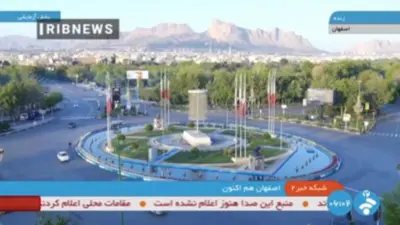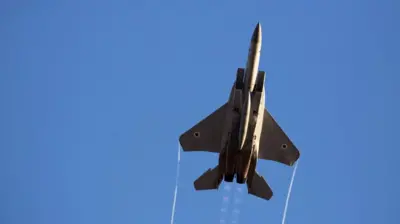We've updated our Privacy and Cookies Policy
We've made some important changes to our Privacy and Cookies Policy and we want you to know what this means for you and your data.
Ethiopia conflict: How is aid flowing to Tigray?
- By Peter Mwai
- BBC Reality Check
Image source, Getty Images
The UN has voiced concern about high levels of child malnutrition in Ethiopia's Tigray region, despite more aid coming in after last November's peace deal between the government and Tigrayan forces.
A third of children assessed late last month were acutely malnourished, and about four per cent of children screened were severely malnourished, says the UN.
What aid is getting into Tigray?
Although the flow of humanitarian aid is gradually being scaled-up, it is "still inadequate to meet vast needs," according to the UN Office for the Co-ordination of Humanitarian Affairs.
And some areas remain inaccessible, mostly along the border with Eritrea and those areas of Tigray adjoining the Amhara and Afar regions of Ethiopia. It has also been a challenge reaching people living far away from main roads.
The head of the World Health Organization, Tedros Adhanom Ghebreyesus who is himself from Tigray, says there has been progress in delivering food aid and medicine to Tigray. "There is progress in both...[but] still there are a lot of areas that are not yet covered," he says.
For many months, the only viable land route into Tigray had been from the Afar region to the east. But even that was highly problematic with very limited supplies getting through.
Now convoys are able to travel this route more freely, and also use two others from the south and further to the west.
The UN says by late December, 20 organisations had delivered more than 100,000 tonnes of food and more than ten tonnes of non-food items to Tigray, including medical supplies.
The Ethiopian government also distributed food aid to some areas in Tigray following what it described as the improved security situation.
Image source, Reuters
Humanitarian flights to the regional capital, Mekelle, and the city of Shire, have been carrying medical supplies and aid workers. The UN says 17 tonnes of medical supplies have been flown from the capital, Addis Ababa, to Shire and Mekelle since the signing of the deal.
Did aid get into Tigray during the conflict?
The flow of aid into the Tigray region became problematic after fighting broke out in November 2020.
There were periods when international aid agencies had access - between July and December 2021 and between April and August 2022.
But there have been months when there's been very limited or no access for humanitarian aid and staff into the region as the flow was affected by fighting along delivery routes, multiple roadblocks and vehicle checks and damage to key infrastructure.
Image source, Reuters
Delays in issuing approval for aid convoys to travel by road through areas held by federal and regional government forces was also an issue.
The government also put in place strict controls for humanitarian aid flights - including a requirement for all flights to land first in the Ethiopian capital, Addis Ababa, for inspection.
The first movement of aid to Mekelle after the peace deal was a convoy of two trucks carrying medical aid on 15 November.
This article contains content provided by Twitter. We ask for your permission before anything is loaded, as they may be using cookies and other technologies. You may want to read Twitter cookie policy and privacy policy before accepting. To view this content choose 'accept and continue'.
End of Twitter content, 1
Prior to that, the last movement of a UN humanitarian cargo into Tigray was on 22 August along the Semera route. There was also an airlift of aid on 23 August from the Ethiopian capital, Addis Ababa, to Mekelle.
More than five million people were facing severe hunger in Tigray at that time, according to the World Food Programme. The UN says more than half of these people have benefited from aid deliveries in recent weeks.
Resumption of basic services
In addition to humanitarian aid, large parts of the Tigray region have been without electricity, telephones, internet and banking services for close to two years.
The government recently reconnected the regional capital, Mekelle, to the national electricity grid, raising hopes that electricity supplies will soon be restored more widely in Tigray.
Mobile telephone connectivity has also been restored in some areas, including Mekelle and Shire, but some areas remain without power and phone communications.
The government says it is working on repairing and restoring infrastructure. Ethiopian Airlines resumed commercial passenger flights to Mekelle on 28 December and later to Shire on 2 January.
Banking services have also restarted in some parts of the Tigray region.
Ethiopia’s Tigray war: The short, medium and long story
A conflict in northern Ethiopia is threatening to destabilise the region. This is why it erupted.
Top Stories
Features & Analysis
Most read
Content is not available








